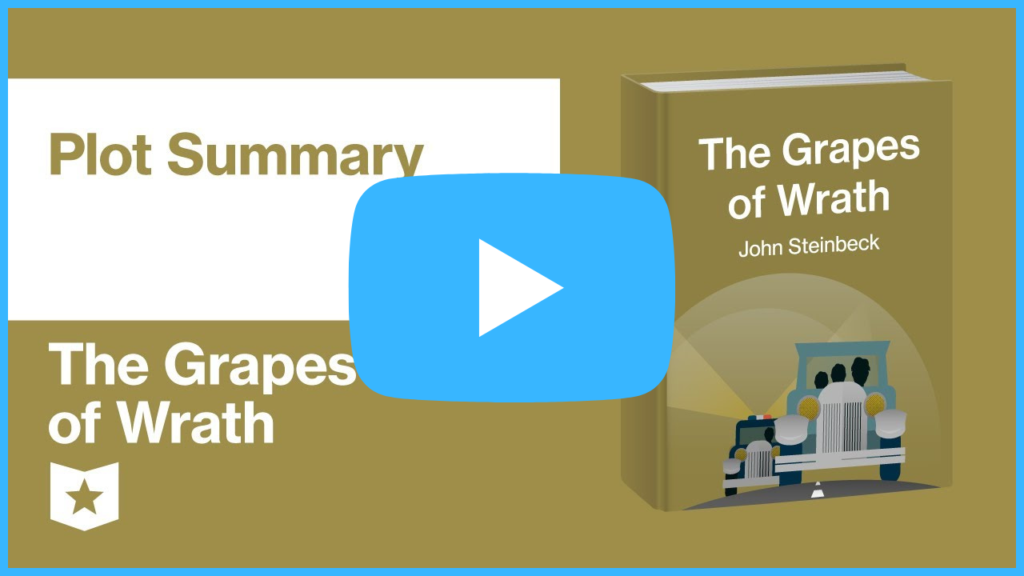Over the course of the 35 videos in this playlist, students will get access to a chapter-by-chapter summary and analysis of John Steinbeck’s The Grapes of Wrath. This playlist also contains videos on the overall plot summary, character analysis, and a study of the symbolism and themes. After watching these videos, students will be able to cite strong and thorough textual evidence to support their analysis of what the text says both explicitly and inferences drawn from the text, including where the book is intentionally vague. Students will be able to determine the themes of the book and analyze the author’s choices as they relate to the development of the story including the timeline of events. Students will also gain insight into grasping various points of view by comparing what is directly said and what is actually meant. Students will also get practice in analyzing multiple interpretations of the text. Course Hero also provides free resources like study guides and infographics at the link below. For a list of Common Core State Standards addressed, see below.
Download the free study guide and infographic for The Grapes of Wrath by John Steinbeck here: https://www.coursehero.com/lit/The-Grapes-of-Wrath/

Common Core State Standards The Grapes of Wrath by John Steinbeck
CCSS.ELA-LITERACY.RL.11-12.1
- Cite strong and thorough textual evidence to support analysis of what the text says explicitly as well as inferences drawn from the text, including determining where the text leaves matters uncertain.
CCSS.ELA-LITERACY.RL.11-12.2
- Determine two or more themes or central ideas of a text and analyze their development over the course of the text, including how they interact and build on one another to produce a complex account; provide an objective summary of the text.
CCSS.ELA-LITERACY.RL.11-12.3
- Analyze the impact of the author's choices regarding how to develop and relate elements of a story or drama (e.g., where a story is set, how the action is ordered, how the characters are introduced and developed).
CCSS.ELA-LITERACY.RL.11-12.4
- Determine the meaning of words and phrases as they are used in the text, including figurative and connotative meanings; analyze the impact of specific word choices on meaning and tone, including words with multiple meanings or language that is particularly fresh, engaging, or beautiful. (Include Shakespeare as well as other authors.)
CCSS.ELA-LITERACY.RL.11-12.5
- Analyze how an author's choices concerning how to structure specific parts of a text (e.g., the choice of where to begin or end a story, the choice to provide a comedic or tragic resolution) contribute to its overall structure and meaning as well as its aesthetic impact.
CCSS.ELA-LITERACY.RL.11-12.6
- Analyze a case in which grasping a point of view requires distinguishing what is directly stated in a text from what is really meant (e.g., satire, sarcasm, irony, or understatement).
CCSS.ELA-LITERACY.RL.11-12.7
- Analyze multiple interpretations of a story, drama, or poem (e.g., recorded or live production of a play or recorded novel or poetry), evaluating how each version interprets the source text. (Include at least one play by Shakespeare and one play by an American dramatist.)


